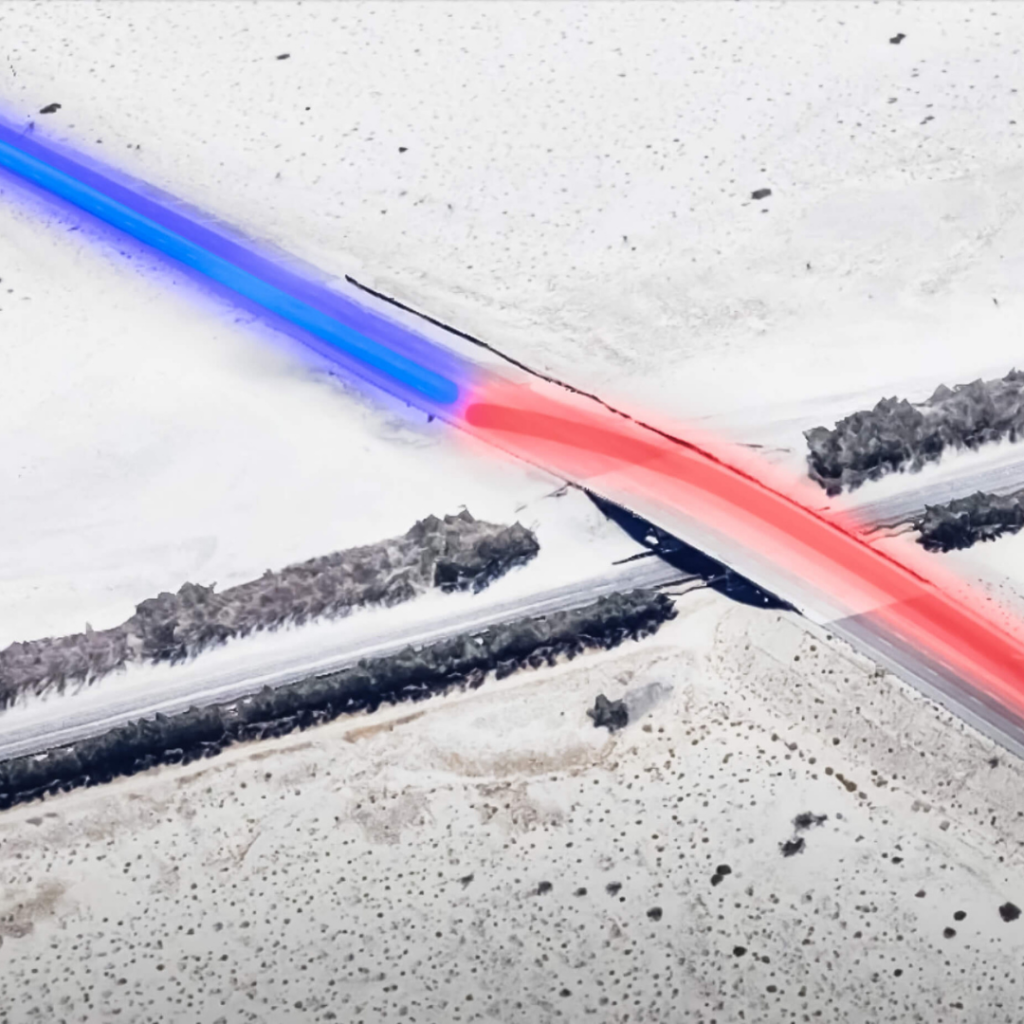Summary:
In one of the desert communities of Southern California, two vehicles were driving in opposite lanes over a highway bridge. They both entered a sandstorm that covered the bridge, which reduced both driver’s visibility.
The plaintiff entered the storm at a high speed and lost control of the vehicle. He then crashed into the other vehicle, which resulted in unfortunate fatalities. Courtroom Animation was retained by the defense counsel for the municipality. They were being sued for liability regarding excessive sand on the highway.
How could this complex accident be accurately depicted? By collaborating with four experts, our team created a car crash animation that reflected and merged the data into one memorable story. Watch our CEO and founder, Brady Held, explain how this forensic animation helped land a successful settlement:
Challenge: Visualizing Four Data Sets
Due to every motor vehicle collision case having unique speeds, visibility, car models, and more, the story can be confusing to follow. This case was particularly unique in that it had the added complexity of visual obstructions due to the sandstorm. One of the key arguments of the defense was that the plaintiff was traveling at a high speed toward a hazard that he should have seen and anticipated, and thus he should have slowed down.
To enhance and clarify this argument, the defense party consulted with four distinct experts:
- Accident reconstructionist
- Forensic meteorologist
- Environmental scientist
- Human factors expert
The defense party had various data sets to use as leverage, but they wanted to pull them together into a cohesive narrative. In other words, the data was a puzzle that needed to be assembled for the viewers.

Car Crash Collision Graphic
The better and more complete that puzzle is assembled, the easier it is for the viewers to follow the case. Each expert could assemble their own pieces of the puzzle, but since their expertise was all in different areas, their parts of the puzzle were different. As a result, none of the expert’s depositions could tell the full story.
The defense attorney could try to put the pieces of the puzzle together, but since the presentation would only be auditory, the impact may not be compelling.
That’s where forensic animation came in as the glue to put the pieces together into an easy-to-understand puzzle.
Solution: Telling a Story with Data & Car Crash Animations
With the sandstorm in full force, the plaintiff should have seen it from several hundred feet away. This is what the forensic animation visualized to help demonstrate liability. But how did our team recreate the visuals to align with the defense’s visual needs and accurately reflect the data?
“The animation was highly effective. The viewers were rapt every time we played it and they asked to see it again and again. After the settlement was finalized, many of the viewers told us that they really liked the video. It brought our case home!”
– Jesse Cox, Partner at Lynberg Watkins
From the accident reconstructionist, we received laser scans that allowed us to recreate a 3D environment. Obtaining vehicle motion data also allowed us to animate the crash in accordance with the accident’s findings.
The forensic meteorologist provided data concerning the lighting conditions caused by the sandstorm. The environmental scientist provided the sand’s density, and the height and speed at which it was blowing over the bridge.

3D Environment Created from Laser Scan Data
The human factors expert helped us determine the driver’s point of view, conspicuity, and visible signage along that road. By combining these pieces of the puzzle together, the data communicated how if the plaintiff was traveling at a lower speed, the event would have had a different outcome.
To demonstrate this in a digestible manner, Courtroom Animation’s forensic animation team created an alternative scenario. It visualized the plaintiff driving at a lower rate of speed and how he could have avoided the crash.
When these pieces of data were assembled, they produced a realistic and accurate picture. The visual reflected how the plaintiff had the ability to see the storm, and had ample time to take a different action. This helped the defense explain why he had a responsibility for a portion of the liability.


Simulation of the Plaintiff’s Driving View
Another accident recreation animation was developed to highlight the street signs that labeled the speed limit before the bridge. This emphasized that the driver was taking another reckless action by disregarding the signs.
Overall, the collaboration with these four experts ensured that the motor vehicle collision animation was accurate, and thus admissible. When their expertise was combined, the result became a complete story for the viewers to follow.
If they couldn’t connect the dots between each expert’s deposition (or forgot key elements, since an auditory explanation isn’t as easily retained in memory), the defense’s case would have been much weaker. And, as expert witnesses cannot speculate on data that is not in their expertise or deposition, merging the data would have been difficult without a visual.
That’s what our animation accomplished. It took all of the different data pieces and turned them into one car crash animation to help gain the most favorable settlement amount.
Result
Our experienced animation team combined the multiple experts’ data sets into a car crash animation so that the viewers understood the plaintiff’s decisions before the environmental hazard. It became clear that the plaintiff was partially liable, and thus resulted in a favorable settlement for the defense.
Courtroom Animation’s team of visual strategists, animators, and developers can create your forensic animation for any case with car accidents, personal injury, medical malpractice, product liability, and more.
Learn how our car crash animations, or other forensic animations, can assist your defense case today.